
Viking Names
Gunness
Gunness, in the Manley Wapentake of Lincolnshire, is an Old Norse compound from the male personal name Gunni and nes ‘a ness, a headland, a promontory’. The name is topographically appropriate as it is located on a marked promontory on the River Trent. The same personal name also occurs in Gunby and Gunthorpe, Lincolnshire.
Read More

Viking Names
Risby
Risby, in the West Riding of Lindsey in Lincolnshire from Old Norse hrís ‘shrubs, brushwood’ and Old Norse by ‘A farmstead, a village’. This name is found as Rejsby and Risby in Denmark and it is possible that the place-name is transferred from there. If this is the case it was presumably because it is topographically appropriate for the English name as for the Danish. Risby is a joint parish with Roxby.
Read More
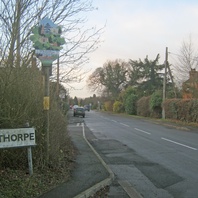
Viking Names
Winthorpe
Winthorpe, in the Newark Wapentake of Nottinghamshire, comes from either the Old English make personal name Wigmund or its Scandinavian equivalent Vígmundr and Old Norse þorp ‘a secondary settlement, a dependent outlying farmstead or hamlet’.
Read More

Viking Names
Brocklesby
Brocklesby, in the Yarborough Wapentake of Lincolnshire, comes from the postulated Old Norse personal name Bróklauss and the Old Norse element bý ‘a farmstead, a village’. The first element is originally a nickname meaning ‘without breeches’ and is likely an Anglo-Scandinavian formation.
Read More

Viking Names
Tupholme
Tupholme, in the Gartree Wapentake of Lincolnshire, comes from the Old Norse male personal name Túpi and Old Norse holmr ‘an island, an inland promontory, raised ground in marsh, a river-meadow’. Alternatively, the first element may represent Middle English tup ‘a ram, a tup’.
Read More
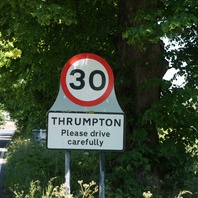
Viking Names
Thrumpton
Thrumpton, in the Rushcliffe Wapentake of Nottinghamshire, comes from the Old Norse male personal name Þórmóðr and the Old English tun ‘farm, settlement’. Thus it is an Anglo-Scandinavian hybrid name. There is a place of the same name, with the same origin, in the Bassetlaw Wapentake.
Read More
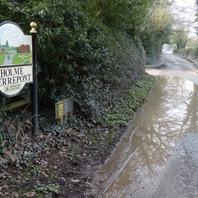
Viking Names
Holme Pierrepont
Holme Pierrepont, in the Bingham Wapentake of Nottinghamshire, comes from Old Norse holmr ‘an island, an inland promontory, raised ground in marsh, a river-meadow’. The name describes its location which is surrounded by watercourses and dikes. The suffix Pierrepont was added at a later date to reflect the family connected to the location. For more information about holmr place-names in the East Midlands, see the Lunchtime Talk Holme from Home? East Midland Place-Names and the Story of Viking Settlement.
Read More
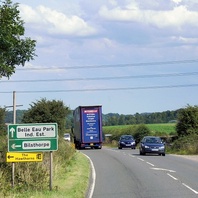
Viking Names
Bilsthorpe
Bilsthorpe, in the Bassetlaw Wapentake of Nottinghamshire, comes from the Old Norse male personal name Bildr and Old Norse þorp ‘a secondary settlement, a dependent outlying farmstead or hamlet’.
Read More
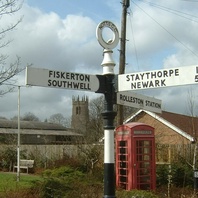
Viking Names
Staythorpe
Staythorpe, in the Thurgarton Wapentake of Nottinghamshire, comes from the Old Norse male personal name Stari and the Old Norse element þorp ‘outlying farm, settlement’.
Read More
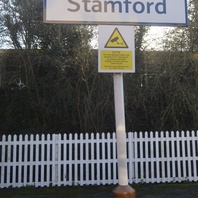
Viking Names
Stamford
Stamford, in the Ness Wapentake of Lincolnshire, is one of the Five Boroughs of the Danelaw. The place-name comes from the Old English elements stan ‘stone’ and ford ‘ford’. The town is located near a point where the River Welland was easily fordable throughout the year. In 913 The Great Heathen Army arrived in Stamford.
Read More
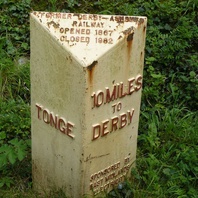
Viking Names
Derby
Derby, in the Morleyston and Litchurch Hundred of Derbyshire, is the only one of the Five Boroughs of the Danelaw to bear a Scandinavian name. It is also one of the few instances of a Scandinavian-named place for which we have an earlier English name. The English name is Norðworðig from the Old English elements norð ‘north’ and worðig ‘enclosure’. This is possibly related to Derby’s position, slightly north-east of Tamworth and that the enclosure’s northernness is relative to the ancient capital of Mercia. In standard reference books the name Derby is explained as Djúrabý, comprising Old Norse djúr ‘deer’ and by ‘farm, settlement’. Furthermore the compound recurs in the British Isles, and probably refers to a particular function – djúrabý ‘specialised production units that had earlier formed parts of multiple estates’. However, the first element of the name probably has a completely different derivation based on its location on the River Derwent, whose name is pre-English in origin. The form of the river-name in the Anglo-Saxon period was Deorwente. Scandinavian settlers hearing this river-name could have associated the first element deor with the familiar compound djúrabý, or indirectly adapted the Romano-British settlement name Derventio. It is certainly possible that the Romano-British name continued in use to refer to the fortified area in the Anglo-Saxon period. Mint-signatures from Derby point to the likelihood not only that Deoraby originally referred specifically to the area of the Roman fort, but also that it is a Scandinavianisation of a pre-existing name of British origin used by the Anglo-Saxons.
